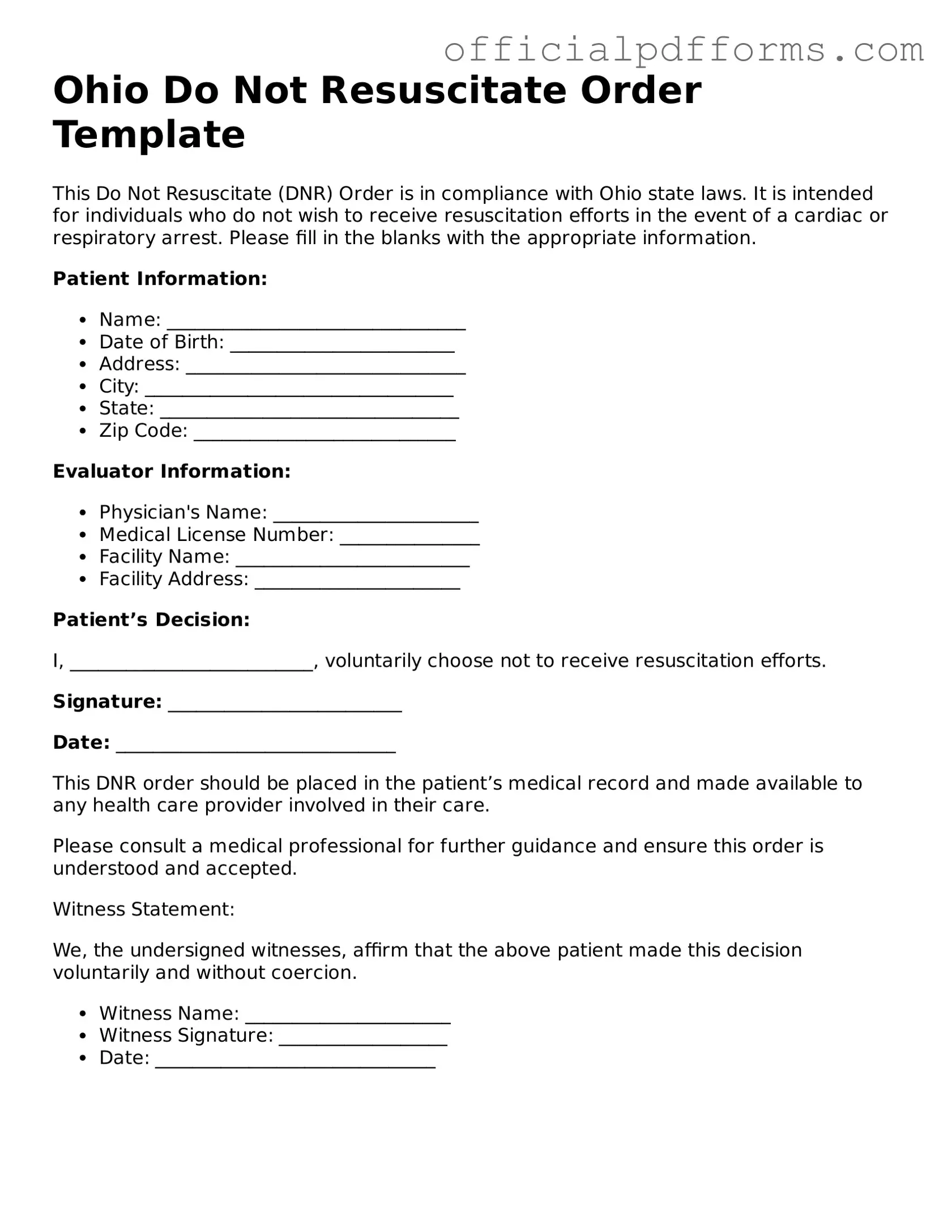Printable Ohio Do Not Resuscitate Order Template
The Ohio Do Not Resuscitate Order form is a legal document that allows individuals to express their wishes regarding resuscitation efforts in the event of a medical emergency. This form is crucial for ensuring that healthcare providers honor a person's decision to forgo life-sustaining treatment. Understanding and completing this form can provide peace of mind for both individuals and their families.
Take the important step of filling out the Ohio Do Not Resuscitate Order form by clicking the button below.
Access Form Online
